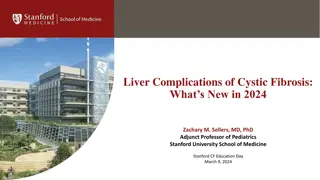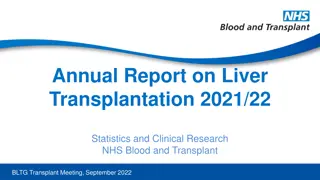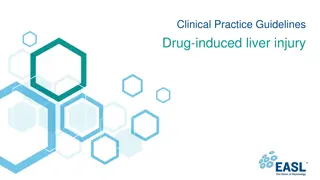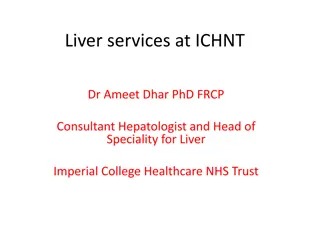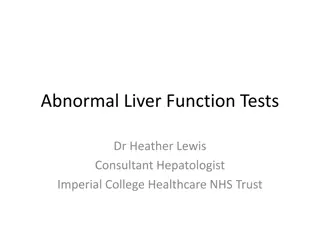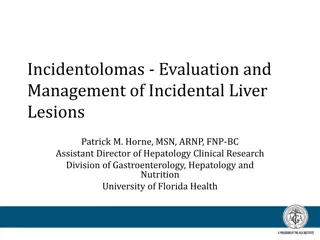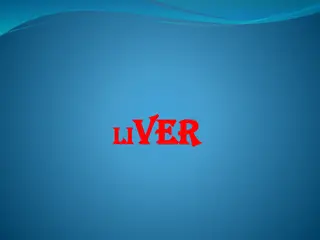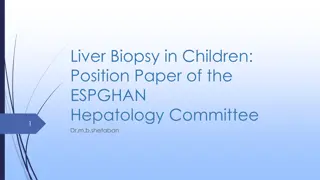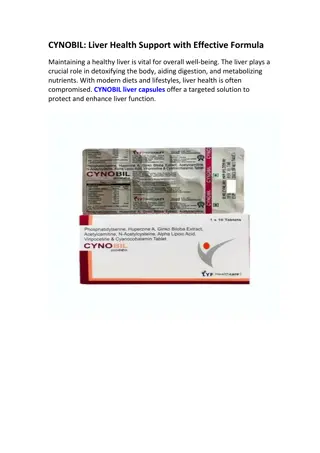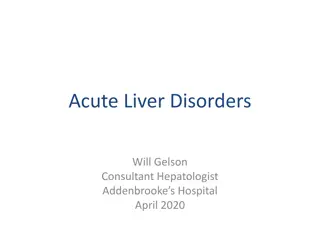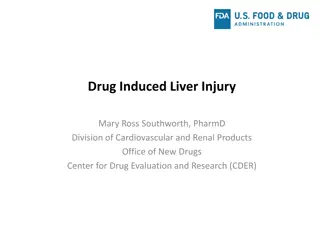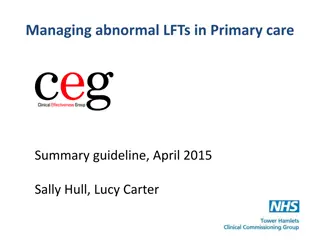Understanding Drug-Induced Liver Injury (DILI)
Drug-induced liver injury (DILI) can present as cholestasis, hepatocyte necrosis, steatosis, vascular damage, and hepatic fibrosis. Various drugs like antibiotics, NSAIDs, recreational drugs, and herbal remedies can cause liver damage. Recognizing DILI is crucial in patients with liver dysfunction or abnormal liver tests. A detailed history of prescribed and self-administered drugs is essential for diagnosis and management.
Uploaded on Sep 29, 2024 | 0 Views
Download Presentation

Please find below an Image/Link to download the presentation.
The content on the website is provided AS IS for your information and personal use only. It may not be sold, licensed, or shared on other websites without obtaining consent from the author. Download presentation by click this link. If you encounter any issues during the download, it is possible that the publisher has removed the file from their server.
E N D
Presentation Transcript
Drugs induced liver injury DILI Prepared by: Dr. Muntadher Abdulkareem Abdullah M.B.Ch.B,CABM,FIBMS,FIBMS(GE.&HEP.)
introduction : Drug toxicity should always be considered in the differential diagnosis of patients presenting with acute liver failure, jaundice or abnormal liver biochemistry. Types of liver injury Different histological patterns of liver injury may occur with drug injury: 1. Cholestasis: Pure cholestasis : (selective interference with bile flow in the absence of liver injury) like estrogen , this mainly occur with high concentration of estrogen , Both the current oral contraceptive pill and hormone replacement therapy can be safely used in chronic liver disease
Drugs that cause cholestatic hepatitis: Like Chlorpromazine and antibiotics such as flucloxacillin characterised by inflammation and canalicular injury Co amoxiclav is the most common antibiotic to cause abnormal LFTs but, unlike other antibiotics, it may not produce symptoms until 10 42 days after it is stopped. Anabolic glucocorticoids used by body-builders may also cause a cholestatic hepatitis. 2.Hepatocyte necrosis : Acute hepatocellular necrosis with high serum transaminase concentrations; paracetamol is the best known. In diclofenac (an NSAID) and isoniazid (an anti-tuberculous drug), Inflammation is not always present but does accompany necrosis in liver injury . Granulomas may be seen in liver injury following the use of allopurinol Acute hepatocellular necrosis has also been described following the use of several herbal remedies, including germander, comfrey and jin bu huan. Recreational drugs, including cocaine and ecstasy, can also cause severe acute hepatitis.
3. Steatosis: tetracyclines and sodium valproate can cause microvesicular hepatocyte fat deposition, due to direct effects on mitochondrial beta-oxidation. Tamoxifen, and amiodarone toxicity cause macrovesicular hepatocyte fat deposition a similar histological picture to NASH. 4. Vascular/sinusoidal lesion: alkylating agents used in oncology can damage the vascular endothelium and lead to hepatic venous outflow obstruction , Chronic overdose of vitamin A can damage the sinusoids and trigger local fibrosis that can result in portal hypertension.
5. Hepatic fibrosis: Methotrexate, however, as well as causing acute liver injury when it is started, can lead to cirrhosis when used in high doses over a long period of time. Risk factors for drug-induced hepatic fibrosis include pre-existing liver disease and a high alcohol intake. Drug induced hepatic fibrosis is very uncommon
Approach to a patient with drug induced liver injury : Tabulate the drugs taken: Prescribed and self-administered Establish whether hepatotoxicity is reported in the literature Relate the time the drugs were taken to the onset of illness: 4 days to 8 weeks (usual) Establish the effect of stopping the drugs on normalization of liver Biochemistry: Hepatitic liver function tests (2 months) Cholestatic/mixed liver function tests (6 months) N.B. Challenge tests with drugs should be avoided Exclude other causes: Viral hepatitis Biliary disease Consider liver biopsy
Treatment : Stop the offending medication , use of safe alternatives Supportive and symptomatic treatment for nausea, vomiting , itching , etc Short coarse of steroid can be beneficial in certain cases Close monitoring of patient condition and follow up biochemical investigations Liver transplantation in case of fulminant liver failure





